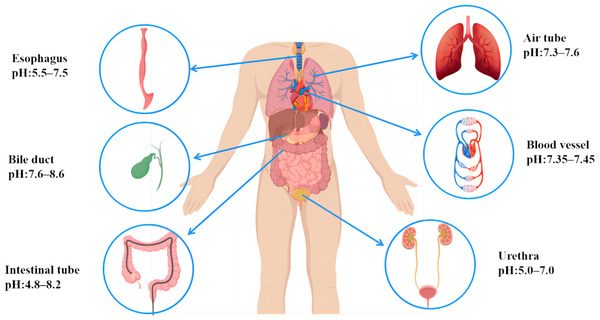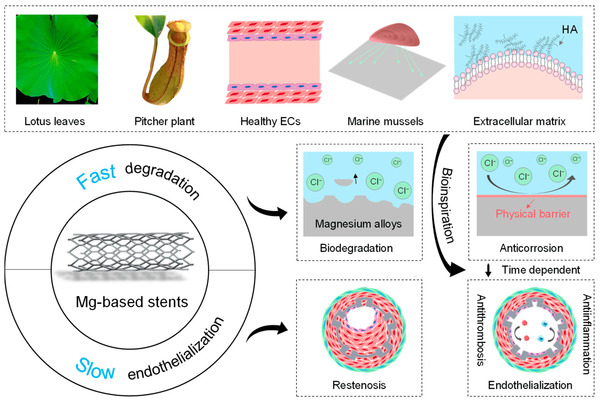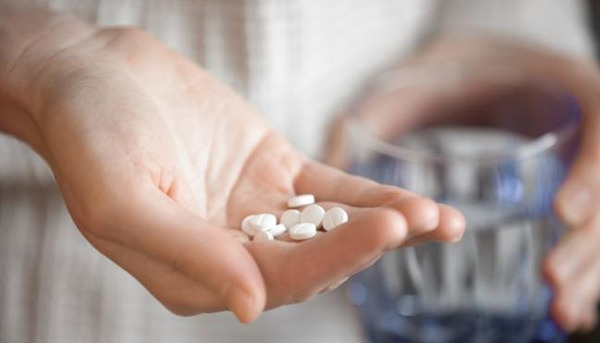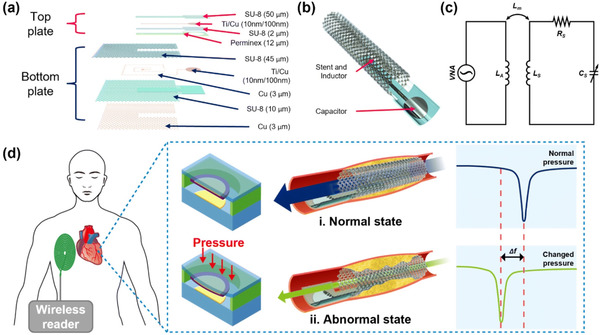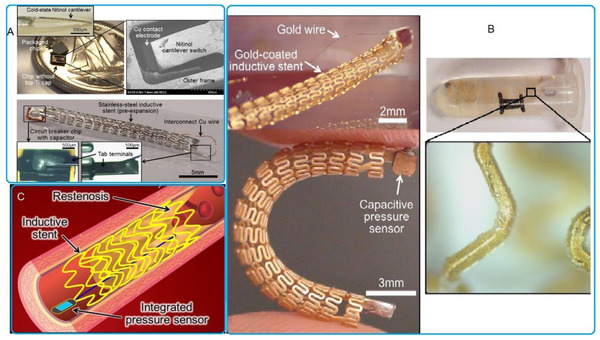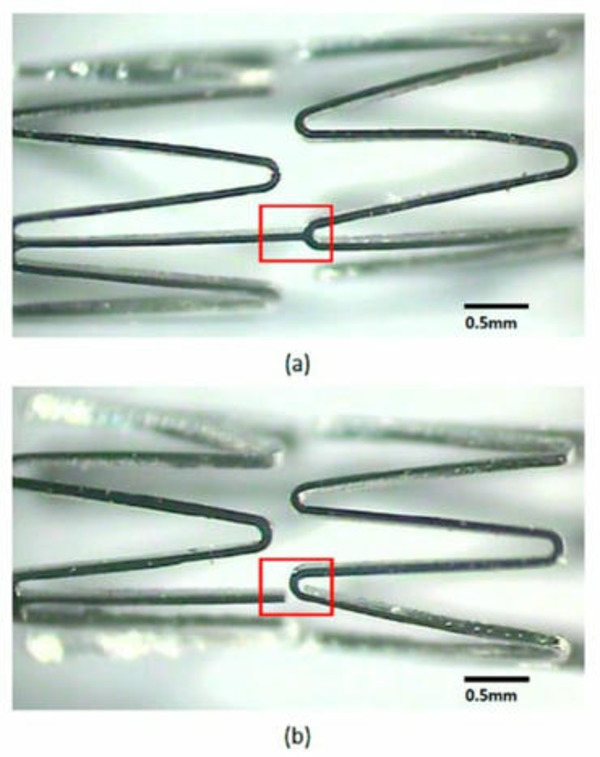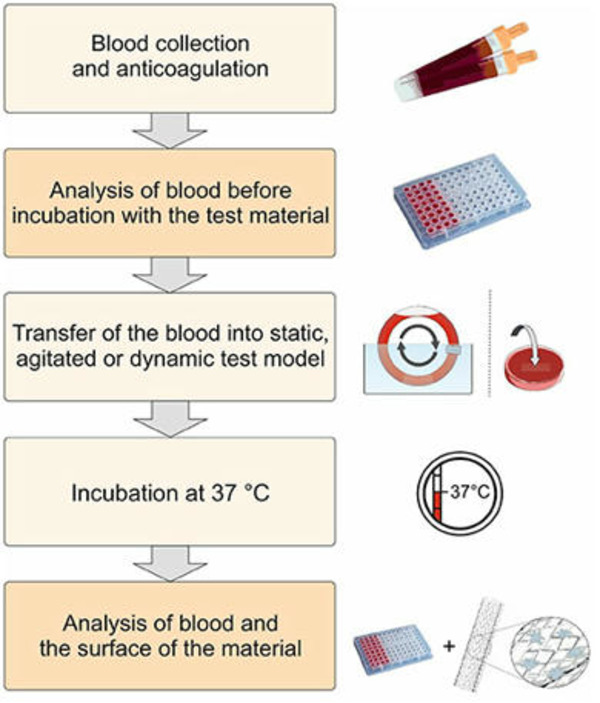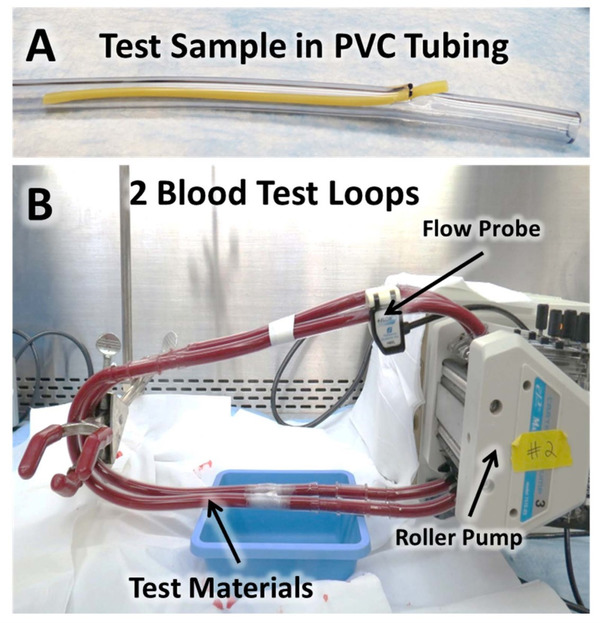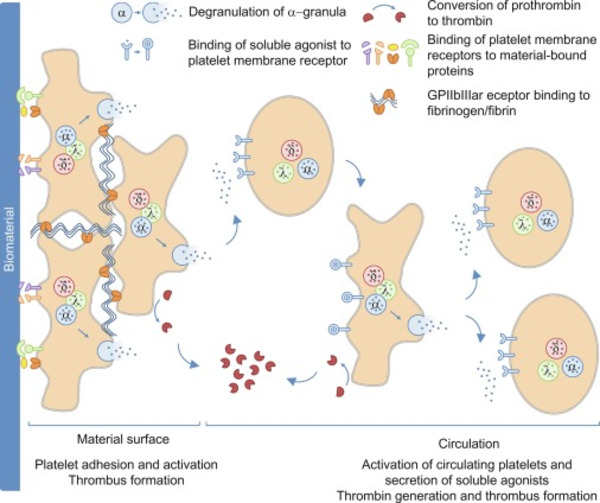 Your new post is loading...

|
Scooped by
Beeyond
|
The investigation underscores the significance of corrosion resistance and biocompatibility in diverse anatomical cavities. The quintessential biodegradable Mg stent ought to possess stellar mechanical properties, biodegradability, and commendable biocompatibility while taking into account site-specific requisites. The utilization of degradable stents obviates the necessity for secondary interventions and proffers unparalleled advantages in disparate luminal environments. Mg alloys have garnered attention as exceedingly promising materials for multifaceted human implants, owing to their mechanical attributes and degradation kinetics. Nevertheless, challenges such as mechanical support duration, degradation kinetics, biological functionality, and compatibility with minimally invasive therapeutic modalities necessitate redressal for prospective device translation.

|
Scooped by
Beeyond
|
The disadvantages of Mg-based stents include their rapid degradation and insufficient endothelialization after implantation. Bioinspired strategies for Mg-based stents can increase not just the corrosion resistance but also their biocompatibility. For instance, bioinspired strategies would exhibit slow degradation by constructing a bioinspired physical barrier to prevent exposure of Mg-based stents to the ambient atmosphere and achieve fast endothelialization after implantation to tackle restenosis problems.

|
Scooped by
Beeyond
|
These findings suggest that low LDL-C levels are associated with an increased bleeding risk within 3 months among patients with minor ischemic stroke or high-risk transient ischemic attack who are receiving dual antiplatelet therapy, especially those taking ticagrelor-aspirin.

|
Scooped by
Beeyond
|
The preliminary findings confirmed the proposed smart stent's higher level of structural integrity, durability and repeatability. Finally, the practical feasibility of the smart stent is demonstrated by monitoring diastole and systole at various beat rates using a phantom. The results of the phantom study showed a similar pattern to the human model, indicating the potential use of the proposed multifunctional smart stent for real-time applications.

|
Scooped by
Beeyond
|
The stent may be used as an antenna coil and may replace supplemental circular or planar coils for receiving power. The stent shape and dimensions may be modified to allow them to receive energy and also provide longer life, thereby having a longer-term treatment. This study is expected to introduce a key database of associated works for researchers in the field. Lastly, the problems and challenges involved in improving the devices and long-term treatments were discussed in detail.

|
Scooped by
Beeyond
|
In this paper, we present a stent antenna for intravascular monitoring and implantable wireless applications that employ the entire stent as an antenna. The main contribution of this work was the manipulation of the current distributions of the stent for good radiation performance with a short stent length by exploiting a single connector between each unit of the stent. Unlike a general stent, wherein each unit is connected with multiple connectors, our proposed stent can achieve good EM radiation, maintain good mechanical strength, and remain within fracture limits during balloon expansions. A prototype was designed, fabricated, and experimentally examined with an EM anechoic chamber. The fabricated stent antenna demonstrated an omnidirectional radiation pattern, a gain of 1.38 dBi, and a radiation efficiency of 74.5% at the resonant frequency of 2.07 GHz. The results of this research should contribute to the development of implantable wireless communications and intravascular monitoring of cardiovascular diseases.

|
Scooped by
Beeyond
|
The interaction of biomaterials with blood leads to cellular as well as humoral reactions, which can result in an unwanted inflammation and activation of coagulation and/or fibrinolysis. Thus, the development of biomaterials with an improved hemocompatibility increases the tolerability and minimizes unwanted side effects, such as thrombus formation. Therefore, during the development of new blood-contacting medical devices, not only the mechanical and chemical characteristics should play an important role, but also the hemocompatibility. Furthermore, to prove the safety and reliability of new products, hemocompatibility analyses should include appropriate references and follow the ISO 10993-4 standard.

|
Scooped by
Beeyond
|
There is currently no standardized test method for in vitro dynamic thrombogenicity assessment of medical devices and biomaterials. This tool will effectively enable users to differentiate device materials with different thrombogenic potentials against standard negative and positive control materials and a marketed comparator device with known thrombogenicity profile.

|
Scooped by
Beeyond
|
These results demonstrated that multiple animal blood sources (particularly donor ovine and bovine blood) may be suitable alternatives to fresh human blood for dynamic thrombogenicity testing when appropriate control materials and donor-specific anticoagulation levels are used.

|
Scooped by
Beeyond
|
Many people overlook common lifestyle factors that impact their heart health. The survey, conducted by Ipsos, reveals around three in 10 adults are unaware that alcohol (32 percent), smoking (27 percent), and lack of sleep (27 percent) are linked to heart disease.

|
Scooped by
Beeyond
|
The interaction of biomaterials with blood leads to cellular as well as humoral reactions, which can result in an unwanted inflammation and activation of coagulation and/or fibrinolysis. Thus, the development of biomaterials with an improved hemocompatibility increases the tolerability and minimizes unwanted side effects, such as thrombus formation. Therefore, during the development of new blood-contacting medical devices, not only the mechanical and chemical characteristics should play an important role, but also the hemocompatibility. Furthermore, to prove the safety and reliability of new products, hemocompatibility analyses should include appropriate references and follow the ISO 10993-4 standard.

|
Scooped by
Beeyond
|
Acute coronary syndrome (ACS) remains a major challenge in clinical practice, requiring rapid and effective antithrombotic treatment to mitigate adverse ischemic events while minimizing the risk of bleeding. In recent years, results from several clinical trials addressing this issue through various approaches have substantially improved the treatment landscape for patients presenting with ACS. The emergence of new, potent P2Y12 inhibitors has significantly enhanced thrombotic risk reduction and different strategies for de-escalating and shortening dual antiplatelet therapy (DAPT) have demonstrated promising outcomes in reducing bleeding rates. Furthermore, data from ongoing trials focusing on novel therapeutic agents and investigating alternative treatment strategies to optimize outcomes for ACS patients are expected in the next few years. In this review, we summarize the current knowledge and emphasize the critical role of individualized treatment approaches tailored to patient-specific risk factors and individual clinical scenarios.

|
Scooped by
Beeyond
|
Despite substantial advances in stent technology, ISR remains the primary cause of target lesion failure after PCI. The available evidence supports the use of DCB angioplasty and DES implantation as first-line therapies for ISR. Nonetheless, the choice between DES and DCB should be individualized based on clinical, anatomical, and technical factors. In this regard, intravascular imaging with IVUS and OCT can be useful for identifying the primary mechanisms leading to ISR and guiding the interventional strategy during PCI. Moreover, emerging combined approaches employing lesion modification with cutting/scoring balloons, intravascular lithotripsy, rotational atherectomy, or excimer laser in association with DCB or DES can be advantageous in the treatment of specific patterns of ISR. Further high-quality data are needed to define the differential effectiveness and safety of contemporary DCBs and DESs, the long-term clinical outcomes, and whether there are preferential clinical and anatomic conditions for the use of one device over the other.

|
Scooped by
Beeyond
|
This product is suitable for patients with primary early to moderate open-angle glaucoma who are unable to tolerate or are unsuitable for traditional filtering surgery, and who, under static gonioscopy, have fully open angles, have had inadequate response or are intolerant to medication alone, and for whom angle laser therapy cannot control disease progression or is deemed inappropriate by the physician. It is also intended for patients who cannot undergo or are ineligible for angle laser therapy, and who require intraocular pressure (IOP) reduction in conjunction with cataract surgery.

|
Scooped by
Beeyond
|
Despite the abundance of research examining the effects of coffee, tea, and alcohol on inflammatory diseases, there is a notable absence of conclusive evidence regarding their direct causal influence on circulating inflammatory cytokines. Previous studies have primarily concentrated on established cytokines, neglecting the potential impact of beverage consumption on lesser-studied but equally important cytokines.

|
Scooped by
Beeyond
|
The model suggests that inhibiting M-CSF significantly affects the formation of atherosclerotic plaques by altering macrophage behavior and inflammatory responses, while disturbances in cholesterol homeostasis continue to lead to lipid accumulation. This is supported by research indicating M-CSF’s pivotal role in macrophage activation, foam cell creation, and chronic inflammation, which are essential for plaque development and instability. As a result, future therapeutic strategies that aim to target M-CSF and its associated cytokines are proposed to mitigate inflammatory conditions, thus potentially decreasing the risk of adverse events related to atherosclerosis.

|
Scooped by
Beeyond
|
Pre-clinical studies have suggested a direct role of vitamin D in the regulation of several pathophysiological pathways, such as endothelial dysfunction and platelet aggregation; moreover, observational data have confirmed the relationship with different conditions, including coronary artery disease, heart failure, and hypertension. Despite the significant evidence available so far, most clinical trials have failed to prove any positive impact of vitamin D supplements on cardiovascular outcomes. This discrepancy indicates the need for further information and knowledge about vitamin D metabolism and its effect on the cardiovascular system, in order to identify those patients who would benefit from vitamin D supplementation.

|
Scooped by
Beeyond
|
The relationship between vigorous physical activity (PA) and the development of coronary atherosclerosis has remained less explored for many years. Recently, literature data have focused on coronary atherosclerosis in athletes showing that prevalence is not trivial, that there are differences among various types of sport, and that there are some peculiar features. As a matter of fact, plaque composition in athletes seems to be characterized by calcium rather than soft components. Specific mechanisms through which vigorous PA influences coronary artery disease are not yet fully understood. However, the prevalent calcific nature of coronary plaques in athletes could be related with a trend in a lower cardiovascular event rate.

|
Scooped by
Beeyond
|
Indobufen shared the same risk of MACCE but a lower risk of bleeding after PCI versus aspirin from a real-world perspective. Due to the observational nature of the current analysis, future studies are still warranted to further evaluate the efficacy of indobufen based DAPT, especially in patients with ACS.

|
Scooped by
Beeyond
|
Replacing aspirin with indobufen in the dual antiplatelet (DAPT) regimen for patients without elevated cardiac troponin after successful drug-eluting stent implantation results in a lower risk of 1-year net clinical outcomes, a difference driven by nonserious bleeding events, according to the randomized OPTION trial.

|
Scooped by
Beeyond
|
Antiplatelet therapy is a cornerstone in the management of acute coronary syndromes. Even if recent guidelines confirm the use of a dual antiplatelet regimen consisting of aspirin and a P2Y12 inhibitor as the standard of care, dramatic changes in stent technology and features of patients have led to greater attention to the balance between hemorrhagic and thrombotic risk. Taking into consideration all these aspects, recent years have been characterized by an effort to define alternative strategies to limit hemorrhagic complications while ensuring an efficacious antithrombotic effect, which have been tested in numerous RCTs, such as P2Y12 monotherapy and guided or unguided downgrading of DAPT.

|
Scooped by
Beeyond
|
Although there are no recommendations in the guidelines for the use of DCB in the “de novo” lesions, the literature evidence supports the use of DCB in de novo lesions for small vessel disease and suggests promising early results in the treatment of de novo lesions in large vessel disease. In general, DCB PCI in large vessels is feasible, but a careful selection of patients and adequate preparation of the target lesion are key criteria in the treatment of these lesions. While the evidence suggests the potential effectiveness of DCB, it is important to interpret the results with care, considering the variability in study dimensions and patient characteristics, and only the incoming large randomized clinical trials will clarify if the DCB technology will be a new option for the treatment of patients with large vessel coronary atherosclerosis.

|
Scooped by
Beeyond
|
Efemoral Medical, developer of advanced interventional bioresorbable therapies, today announced that the United States Food & Drug Administration (FDA) has granted its novel Efemoral Vascular Scaffold System (EVSS) Breakthrough Device status for the treatment of de novo or restenotic lesions of the infrapopliteal arteries in patients with Chronic Limb Threatening Ischemia (CLTI).

|
Scooped by
Beeyond
|
Rotational atherectomy is a validated technique for the treatment of CLTI with BTK-lesions, demonstrating both safety and effectiveness. Importantly, its application does not demand additional procedural time or specialized experience and training. The use of atherectomy-assisted angioplasty in the BTK segment showed clinical advantages over POBA. In order to establish this promising technology in the arsenal of the modern vascular specialist, multicenter studies with control groups others than POBA and mid- and long-term outcome evaluation are required.

|
Scooped by
Beeyond
|
Although simple balloon angioplasty remains the standard due to its safety, cost-effectiveness, and repeatability, it is limited by high rates of restenosis and flow-limiting dissection. The Tack endovascular system is a valuable rescue device post-PTA dissection but still results in a permanent metallic implant in small-calibre arteries. The use of coronary sirolimus-eluting DESs has shown encouraging results, with excellent primary patency compared with PTA and BMSs, but they are limited by their short length, which complicates applicability to long disease segments that represent the majority of infrapopliteal CLTI, as well as affecting cost. Novel DRSs pose a solution to some of these issues by providing an antiproliferative agent before completely resorbing, eliminating the risk of chronic inflammation and late failure associated with permanent implants. Devices like the Esprit BTK bioresorbable scaffold and similar next-generation devices may herald a new generation of treatment options to overcome the historical challenges of treating long occlusive segment disease.
|

Curated by Beeyond
BEEYOND is a consulting company in the field of disruptive innovation, accompanying established companies on out-of-the-core growth strategy, from creation of new concepts to product launch. Reach us at: contact@beeyond.fr.
|

 Your new post is loading...
Your new post is loading...

